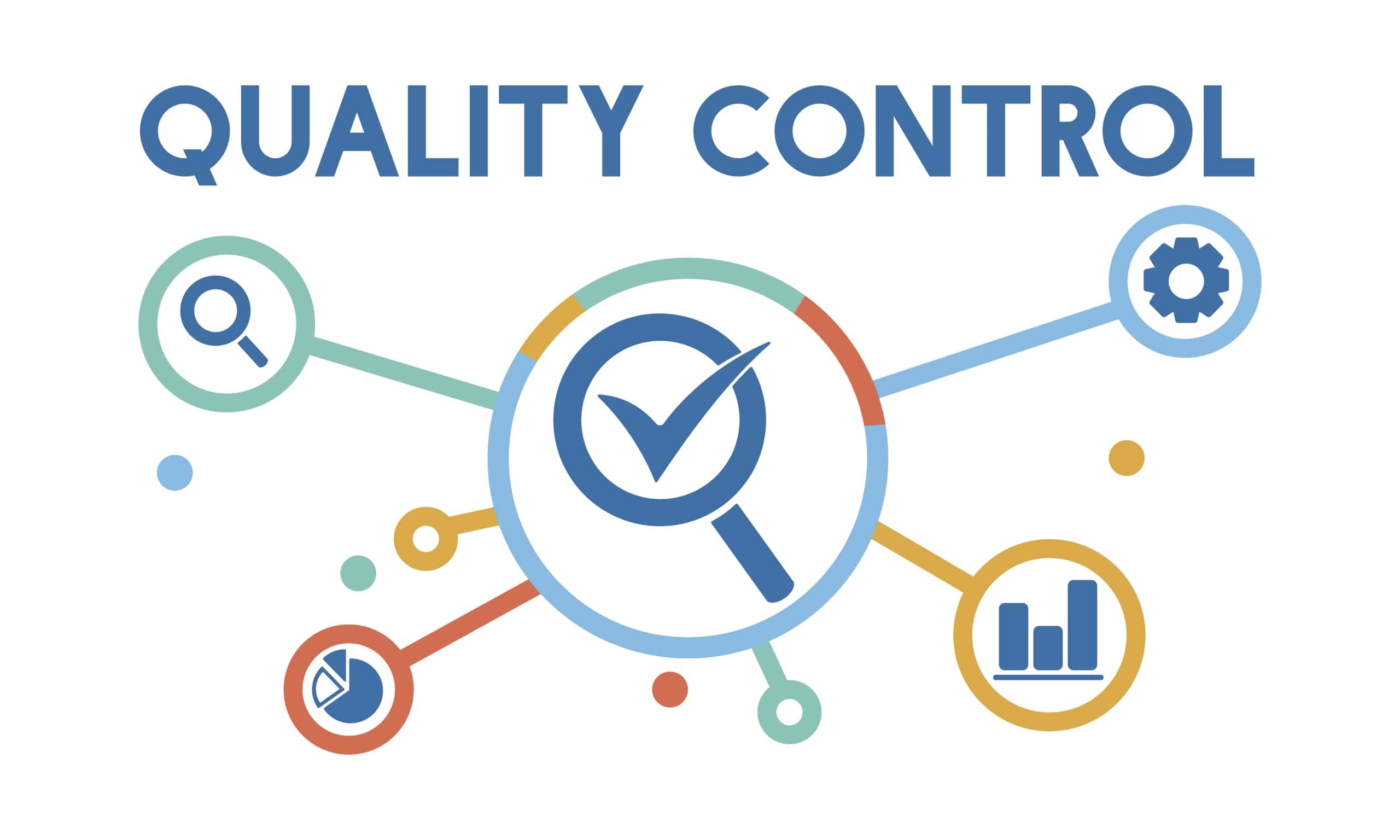1. Inconsistent Wetness Levels
Variations in wet wipes’ moisture levels may substantially influence the product’s quality and the customers’ pleasure. Insufficient moisture in wet wipes might compromise their cleaning efficacy, while excessive moisture can lead to messiness and usability issues. This problem often arises from issues with the liquid dispensing system, which may be resolved with a few specific remedies.
Improperly calibrated nozzles are a major factor contributing to uneven moisture levels. Nozzles have the task of pouring an exact quantity of liquid onto each wipe, and even little variances might result in notable discrepancies. Periodically inspect and adjust the nozzles to verify their proper operation. Incorporating calibration into the regular maintenance cycle is crucial, and any deviations should be promptly rectified to ensure consistent wetness across all wipes.
Another crucial aspect to consider is the pressure exerted by the pumps responsible for delivering the wetting solution. Fluctuating pump pressure might lead to inconsistent dispensing of liquid. Close monitoring and necessary modifications of pump pressure are crucial. Verify that the pressure settings are at their appropriate levels for the specific kind of wipes being manufactured and that the pumps are functioning without any issues. Performing routine maintenance on the pumps, which involves inspecting for leaks and signs of wear, may effectively mitigate pressure-related problems.
Over time, the filters in the liquid dispensing system might get obstructed or soiled, resulting in an uneven distribution of the wetting solution. Regular examination and purification of these filters are essential to guarantee a steady stream of liquid. Replace filters as necessary to prevent obstructions that may disturb the consistency of moisture in the wipes. Regularly cleaning the filters not only ensures consistent performance but also prolongs the lifetime of the dispensing equipment.
To mitigate the occurrence of variable moisture levels in wet wipes, operators should effectively handle three key factors: nozzle calibration, pump pressure, and filter maintenance. By including a regular maintenance program that encompasses these inspections, it is possible to guarantee that every wipe manufactured adheres to the necessary quality benchmarks, resulting in increased customer contentment and fewer product returns.
2. Machine Downtime Due to Jams
Machine downtime resulting from jams is a prevalent problem in the manufacture of wet wipes, which may significantly hinder productivity and efficiency. Production bottlenecks may arise at many phases of the manufacturing process, starting with the supply of materials and continuing until the packing phase. These bottlenecks can result in substantial delays and higher operating expenses. To ensure a seamless production flow, it is crucial to identify and address the underlying causes of these bottlenecks and to apply proactive steps to avoid them.
Implementing a thorough maintenance program is quite useful in preventing machine jams. Routine maintenance inspections may detect possible problems before they escalate into major concerns. This entails examining and purging all mobile components, guaranteeing that materials are adequately lubricated, and substituting worn or impaired elements. By maintaining the equipment in optimum condition, the probability of unforeseen clogs is greatly reduced. Performing routine maintenance not only reduces the occurrence of jams but also prolongs the lifetime of the equipment.
Machine jams often occur due to operator mistakes. Providing comprehensive training to all personnel on proper material handling and loading techniques will effectively avert several frequent problems. The training session should include the appropriate configuration of the machine, the accurate procedure for loading materials, and the necessary measures to be taken in the event of a jam. Equipping personnel with the necessary knowledge and expertise to proficiently operate the equipment may significantly reduce the likelihood of jams and enhance overall efficiency. Consistent training updates and refresher courses may effectively maintain high standards and ensure operators are well-informed on optimal procedures.
The frequency of machine jams may also be influenced by the quality of raw materials used in the manufacturing process. Materials that are of low quality or lack consistency are more prone to causing obstructions and disruptions. By investing in premium raw materials specifically engineered to be compatible with your manufacturing equipment, you can effectively eliminate jams and assure seamless operation. Premium materials may have a greater upfront expense, but they might ultimately be cost-effective by minimizing operational interruptions and enhancing production efficiency.
To drastically decrease the occurrence of machine jams, wet wipes manufacturers may prioritize regular maintenance, provide sufficient operator training, and choose high-quality materials. Implementing these precautionary steps not only ensures the seamless functioning of the manufacturing line but also leads to enhanced productivity, reduced operating expenses, and enhanced product quality. By incorporating these tactics into a complete production management strategy, the occurrence of jams is reduced and the amount of time when production is halted is limited. This leads to a more efficient and dependable production process.
3. Poor Seal Integrity
Ensuring the integrity of seals is of utmost importance in the manufacture of wet wipes to guarantee the safety of the product, prevent any form of contamination, and preserve the product’s shelf life. Inadequate seal integrity may result in leaks, diminished efficacy of the wipes, and ultimately, customer discontent. To maintain high-quality standards, it is crucial to address the root causes of seal failures and adopt strong remedies.
The temperature of the sealing bars is a key component that influences the integrity of the seal. Insufficient or excessive temperature of the sealing bars might result in weakened or too strong seals, which can cause cracks or burns. It is crucial to guarantee that the sealing equipment is functioning at the ideal temperature for the materials being used. Consistently calibrate and monitor the temperature settings to provide a steady and uniform heat level. Employing temperature sensors and automated controls may facilitate the attainment of accurate temperature management, hence guaranteeing robust and dependable sealing.
The alignment of the sealing components is crucial for establishing accurate seals. When there is misalignment, it might lead to an unequal distribution of pressure, which can result in weak areas or partial seals. Perform routine inspections and make necessary adjustments to ensure that the sealing bars and other components are correctly aligned. Utilize alignment tools and procedures to confirm the accuracy of the sealing mechanism setup. Maintaining good alignment may be facilitated by ensuring that the materials are equally and accurately supplied into the sealing machine without any skewing.
It is essential to carry out regular seal integrity testing to promptly detect and resolve any possible problems. Perform periodic examinations to assess the durability and uniformity of the seals. These may include visual examinations, adhesive strength testing, and integrity tests for detecting leaks. Regularly conducting tests on the seals allows for the identification and rectification of any vulnerabilities or discrepancies before the items are released to the market. Implementing a quality control technique that incorporates seal integrity testing as a routine practice helps maintain superior quality standards and guarantee client contentment.
The choice of materials for packaging has an impact on the ability of the seal to remain intact. Verify that the packing materials are suitable for both the sealing equipment and the sealing procedure. Utilizing materials that are not specifically engineered for the intended sealing technique might lead to subpar seals. Collaborate with material suppliers to carefully choose the most suitable solutions for your sealing process and consistently assess material requirements to guarantee compatibility.
Wet wipes manufacturers may greatly enhance seal integrity by prioritizing temperature control, doing alignment checks, performing regular seal testing, and ensuring material compatibility. These procedures serve to avoid leaks, maintain product quality, and guarantee the continued effectiveness and safety of the wet wipes. By allocating resources to these activities, not only will product quality be improved, but customer trust and loyalty will also be fostered, resulting in a more prosperous product in the market.
4. Uneven Cutting
In wet wipes manufacturing, uneven cutting may result in many negative consequences, including product waste, higher expenses, and consumer unhappiness caused by inconsistently sized wipes. This problem may occur due to a variety of circumstances, such as blade erosion, irregularities in tension, and misalignment issues. To guarantee precise and uniform cuts, it is essential to address these concerns by performing routine maintenance and ensuring correct machine setup.
Dull or worn blades are a major factor contributing to uneven cutting. Over time, the blades used in the cutting process may see a decline in their sharpness, resulting in uneven or unfinished cuts. Regular maintenance and honing of the blades are crucial for preserving their cutting performance. Establish a regular and systematic strategy for examining and honing the blades to guarantee they remain in the best possible condition. Moreover, the act of changing blades that exhibit substantial wear or damage may effectively minimize cutting complications and uphold the overall quality of the product.
The tension of the materials being introduced into the cutting mechanism is crucial in attaining uniform cuts. Imbalanced tension, whether too high or low, may lead to material displacement or gathering, resulting in irregular cuts. Frequently check and modify the tension settings to ensure they are suitable for the materials being used. Accurate tension adjustment guarantees a smooth and steady feeding of the material into the cutting area, enabling accurate and uniform cuts. Employing tension control devices or automated tension systems may facilitate the maintenance of uniform tension levels throughout the whole of the manufacturing process.
Accurate alignment of the cutting mechanism is essential for attaining precise and uniform cuts. Uneven cutting may result from blades or cutting guides that are not properly positioned. Perform routine inspections and make necessary adjustments to ensure the cutting components are properly aligned. Utilize alignment tools and procedures to ensure the accurate configuration of the blades and guides. Maintaining appropriate alignment and obtaining regular cuts may be facilitated by ensuring that the material is fed directly and without any deviation into the cutting region.
Incorporating quality control techniques throughout the cutting process may assist in detecting and resolving errors before their impact on the end product. Perform routine examinations of the sliced wipes to detect any indications of irregularity or flaws. Perform random sampling and testing to verify that the cuts are uniform and adhere to the appropriate standards. Through the implementation of a comprehensive quality control process, producers may promptly identify and rectify any cutting-related problems, therefore guaranteeing the production of a superior end product that maintains a constant size.
Wet wipes manufacturers may effectively decrease the occurrence of uneven cutting in wet wipes manufacturing by prioritizing blade maintenance, tension adjustment, alignment checks, and quality control methods. These approaches not only optimize product quality but also promote operational efficiency and minimize waste. Ensuring precise and uniform cuts is crucial for maintaining client happiness and attaining constant product performance in the market.
5. Wrinkled or Misaligned Wipes
Wrinkled or misaligned wipes are a prevalent problem in the manufacture of wet wipes, which may have a detrimental impact on packing efficiency, product presentation, and overall consumer happiness. These challenges often stem from concerns about material handling, equipment configurations, and operator procedures. To guarantee that wipes are created with a smooth, professional finish and precise alignment, it is important to address these underlying problems.
Accurate management of tension in material rolls is crucial to avoid the occurrence of wrinkles and misalignment in the manufacturing process. Insufficient tension may lead to material displacement and wrinkling. On the other hand, if the tension is too tight, it may cause the material to stretch and deform, resulting in misalignment. Frequently oversee and modify the tension settings to guarantee they are suitable for the specific material being used. Utilizing automated tension management systems may effectively provide a uniform tension level throughout the manufacturing process, hence minimizing the likelihood of wrinkles and misalignment.
Precise calibration of sensors is essential for identifying and rectifying misalignment problems. Malfunctioning sensors, due to calibration errors, may fail to detect misalignment of materials or give inaccurate corrections, resulting in misaligned wipes. Periodically inspect and calibrate the sensors to verify their proper working and precise detection of the material’s location. Accurate sensors that are calibrated appropriately may automatically modify the material input to rectify any irregularities, ensuring precise alignment and avoiding the occurrence of wrinkles.
Operators have a crucial responsibility in guaranteeing the production of wrinkle-free and properly aligned wipes. Thorough instruction on the proper techniques for managing and loading goods may effectively mitigate several typical problems. Operators must get training to properly load material rollers, guaranteeing perfect alignment and suitable adjustment of tension settings. In addition, operators must possess knowledge of the equipment’s settings and be able to make necessary modifications to ensure consistent and properly aligned material feeding. Consistent training updates and refresher courses may effectively enlighten operators about optimal methods and novel approaches to minimize creases and misalignment.
The prevalence of wrinkles and misalignment may also be influenced by the quality of the raw materials used in manufacturing. Inferior materials may exhibit disparities in thickness, texture, or elasticity, rendering them susceptible to wrinkling and misalignment. Utilizing premium materials that are particularly engineered for the manufacturing process may assist in guaranteeing seamless and uniform material flow. Collaborate with material suppliers to choose the most suitable solutions for your production requirements and consistently assess material specifications to verify their compliance with the necessary criteria.
Regularly inspecting the manufacturing process may assist in identifying and resolving problems associated with wrinkles and misalignment. Conduct routine examinations of the material feed, tension settings, and alignment to verify their proper functionality. Incorporating a quality control strategy that includes visual inspections and random sampling may effectively detect and rectify faults at an early stage. Through consistent surveillance of the manufacturing process, producers may guarantee the creation of wipes with a polished surface and accurate positioning, hence maintaining superior product quality.
To greatly decrease the occurrence of wrinkled or misaligned wipes, wet wipes manufacturers should prioritize roll tension control, sensor calibration, operator training, material quality, and frequent inspections. These methods not only enhance the quality and appearance of the product but also improve the efficiency of packing and increase consumer happiness. It is crucial to make wipes with a polished appearance and accurate positioning to stay ahead in the market.
6. Inconsistent Pack Weights
Varying pack weights in the manufacture of wet wipes may result in a range of difficulties, such as inefficient packing, higher expenses, and possibly non-compliance with regulations. It is important to maintain quality standards and customer satisfaction by ensuring that each pack includes a constant weight of goods. To resolve weight discrepancies, it is necessary to carefully address aspects such as weighing equipment, material management, and frequent auditing procedures.
The precision of weighing equipment is crucial in attaining constant pack weights. Regular calibration of weighing equipment is necessary to maintain accuracy. Any divergence in calibration might lead to substantial weight discrepancies across packs. Establish a systematic timetable for the calibration of scales and weighing equipment used in the manufacturing process. Employ automated weighing devices with exceptional accuracy to reduce human error and improve uniformity. Furthermore, it is important to verify that the weighing systems are appropriate for the particular needs of wet wipes manufacturing, taking into account elements such as the level of moisture and the density of the materials used.
Ensuring the regulation and dispersion of materials is crucial for maintaining uniform pack weights. Discrepancies in weight might arise from variations in the quantity of material supplied to each pack. Carefully observe the material feed systems to ensure consistent and even distribution. Develop and deploy automated material feeding systems capable of accurately regulating the quantity of material distributed into individual packs. Perform routine inspections and maintenance on these systems to proactively avoid blockages or malfunctions that may impede the flow of materials. Maintaining a steady flow of raw materials that have constant qualities may also contribute to obtaining regular pack weights.
Performing regular pack weight audits is essential for detecting and resolving any discrepancies. Develop a quality control methodology that includes regular sampling and weighing of packets to assess weight discrepancies. Apply statistical process control techniques to assess the data obtained from these audits and detect trends or patterns that might suggest underlying problems. Take immediate action to address any differences to avoid larger-scale inconsistencies. Regular audits are essential for ensuring compliance with regulatory standards and verifying that each pack satisfies the stipulated weight criteria.
Proficient operators are crucial for ensuring uniform load weights. Deliver extensive instruction on the correct utilization and upkeep of weighing systems and material feeding equipment. Operators must possess a comprehensive understanding of the possible factors contributing to weight discrepancies and be adept at implementing effective solutions to mitigate them. Regular training updates and refreshers may enhance operators’ knowledge of best practices and emerging technology, hence improving consistency. Providing operators with the necessary skills and expertise to monitor and modify production settings will greatly decrease weight fluctuations.
The weight of wet wipes packets may be influenced by environmental factors such as temperature and humidity. Fluctuations in these circumstances might result in alterations in the moisture level of the wipes, resulting in variations in weight. To avoid these consequences, it is important to maintain a well-managed manufacturing environment, ensuring steady temperature and humidity levels. Employ dehumidifiers, air conditioning, and other climate control methods to provide a uniform manufacturing environment. Regularly monitoring environmental conditions and making appropriate modifications may help guarantee consistent pack weights.
To drastically decrease the incidence of irregular pack weights, wet wipes manufacturers should prioritize precise weighing equipment, material control, frequent audits, operator training, and environmental management. These methods not only enhance the quality of the product and ensure compliance with regulations but also improve operational efficiency and increase customer happiness. Ensuring uniform pack weights is crucial for upholding confidence and dependability in the market, thus fostering the success and expansion of the wet wipes manufacturing industry.
7. Contamination Issues
The presence of contaminants during the manufacture of wet wipes poses a significant risk to the quality, safety, and reputation of the product. Contaminants include a wide range of substances, such as extraneous particles, germs, and chemical remnants, which undermine the overall quality and reliability of the end product. To tackle contamination, it is necessary to implement strict hygiene practices, regularly maintain equipment, and establish strong quality control systems to provide a clean and safe manufacturing environment.
Ensuring a pristine manufacturing environment is the primary measure to prevent contamination. Regular cleaning and sanitation of the manufacturing space, encompassing floors, walls, and surfaces, are important to avert the buildup of dust, waste, and bacteria. Implementing a thorough cleaning program that encompasses all parts of the manufacturing facility aids in reducing the likelihood of contamination. Thorough sanitation is achieved by using high-quality cleaning chemicals and disinfectants that are efficient against a wide range of infections. In addition, establishing specific regions for cleanliness and implementing limited zones may effectively manage the dangers of contamination.
Hygiene standards: Imposing stringent hygiene standards on all people engaged in manufacturing is essential for averting contamination. Implementing protocols for personal hygiene, such as frequent handwashing, use of gloves and hairnets, and donning fresh uniforms, aids in minimizing the likelihood of introducing impurities into the manufacturing process. Delivering instruction on correct hygiene procedures and emphasizing the need to adhere to these rules strengthens their value. Implementing routine health screenings and closely monitoring employees may effectively detect possible sources of contamination and swiftly take action to resolve them.
Regular equipment maintenance is crucial to prevent contamination that might result from inadequate equipment upkeep. Regular examination, cleaning, and upkeep of all machines and instruments used in manufacturing are essential to guarantee their freedom from contamination. Establish a maintenance program that includes comprehensive cleansing of all equipment, replacement of deteriorated components, and examination for any indications of contamination. Utilizing equipment constructed from easily cleanable and corrosion-resistant materials may effectively mitigate the hazards of contamination. Implementing thorough sanitation protocols for equipment before and after use is crucial for preserving a working environment free from infection.
Quality control techniques are essential for identifying and resolving contamination problems before they impact the end product. By including regular sampling and testing of raw materials, in-process materials, and completed products, it is possible to detect contamination at different points throughout the manufacturing process. Employing sophisticated testing techniques, such as microbiological testing and chemical analysis, guarantees the detection of even minuscule amounts of impurities. Implementing a quality control program that incorporates these tests and consistently evaluating the outcomes aids in maintaining elevated levels of product safety and quality.
Supplier Management: Ensuring the absence of impurities in raw materials is crucial for maintaining product quality. Collaborate closely with suppliers to develop rigorous quality standards and regularly inspect their facilities and procedures via audits. Choosing suppliers that have a well-established history of consistently delivering goods of superior quality and free from contaminants is an effective strategy for reducing potential dangers. Implementing a comprehensive supplier management program that includes frequent communication, quality inspections, and feedback, guarantees that the raw materials adhere to the requirements.
Conducting regular contamination audits is crucial for identifying and resolving possible sources of contamination. Performing these audits entails a comprehensive examination of the whole manufacturing process, including the handling of raw materials to the final packaging. Identifying possible sources of contamination and executing appropriate measures to address them is crucial for maintaining a hygienic manufacturing environment. Consistently evaluating and revising contamination prevention procedures by audit results guarantees ongoing enhancement and compliance with optimal methods.
To mitigate the risk of contamination in wet wipes production, wet wipes manufacturers should prioritize maintaining a clean environment, enforcing stringent hygiene protocols, regularly maintaining equipment, implementing strong quality control measures, effectively managing suppliers, and conducting regular contamination audits. These processes guarantee that the end product is secure, of superior quality, and devoid of detrimental impurities, hence safeguarding customer well-being and upholding brand standing.








